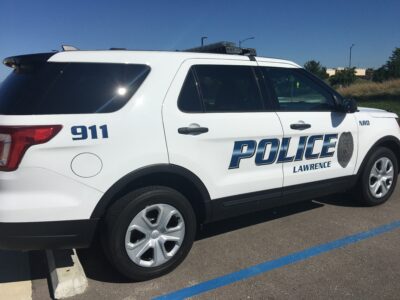County bombing case still a mystery
It’s been a little more than a year since Lloyd and Karen Haas were awakened in the middle of the night by the sound of shattering glass.
Moments later, an explosion tore through their rural Douglas County home, maiming Lloyd Haas Sr. and sending him to a Kansas City hospital for several weeks.
Despite an investigation involving local, state and federal authorities, the bombing remains unsolved.
“It’s a difficult case,” Douglas County Sheriff’s Lt. Ken Massey said during a recent interview. “It’s frustrating more than anything else.”
And neighbors of the Haases, who lived in the 1800 section of North 1100 Road southeast of Lawrence, still wonder and worry.
“I think all of us are a little leery because we don’t know who might be next,” said one of those neighbors, 77-year-old Dorothy Harvey.
Lloyd Haas, now 70, lost his right hand and part of his forearm in the explosion, Harvey said. Haas and his wife never returned to the house. The couple now live near relatives in south-central Kansas.
‘It blew up’
The Haases did not want to be interviewed about the incident that occurred about 3:30 a.m. March 3, 2002. But according to investigators, Lloyd Haas got out of bed to check on the noise he heard and found something that looked like a glowing candle on the living room floor. It had been thrown through the front room’s window.
“He picked it up, proceeded to the kitchen, which was right off the living room, and the next thing he knew, it blew up,” Massey said.
Karen Haas, now 61, was still in the bedroom and wasn’t as seriously hurt, he said. She called 911.
A Douglas County Sheriff’s deputy happened to be on patrol a short distance away and arrived at the house within five minutes, Massey said. Additional officers were called, and an air ambulance helicopter was summoned to take Lloyd Haas to KU Med in Kansas City, Kan.
Karen Haas was taken by ambulance to Lawrence Memorial Hospital, where she was treated and released.
Sheriff’s officers received assistance in their investigation from the federal bureau of Alcohol, Tobacco and Firearms and the Kansas Bureau of Investigation.
In the several weeks after the bombing, investigators checked about 100 leads and interviewed about 40 people, Massey said.
At a standstill
“We weren’t getting a lot of tips or information,” Massey said. “We were just kind of making our own road.”
Investigators scrutinized a neighbor who had been involved in a dispute with Lloyd Haas. After several days, the neighbor was cleared of any involvement with the explosion, Massey said.
Material linked to the explosive device found in the house was sent to an ATF lab for examination. Massey declined to discuss the results of those tests. He did say, however, the explosion was caused by a simple device that wouldn’t have required much expertise in explosives to construct.
The investigation was challenged because the bombing happened in the middle of the night in a rural area while neighbors were sleeping, Massey said.
Nobody saw anything.
“After about three months, to be quite honest, everything pretty much came to a standstill,” Massey said of the investigation.
Today, it remains at a standstill.
“We just haven’t come up with anything new to get us up and running again,” Massey said.
Hope for breakthrough
Massey thinks only one person was responsible for the bombing but others have information that would help investigators.
“I think there are people out there who have a pretty good idea who is involved in this,” he said. “We’re hoping that during the past year some people have had time to reflect on things and that they are more willing to come forward.”
The ATF is offering a reward of $5,000 for information leading to an arrest and conviction in the case. Douglas County Crime Stoppers is offering an additional reward of up to $1,000. Anyone with information who wants to remain anonymous can call (785) 843-TIPS (8477). They can also call detectives at 841-0007.
Massey said he still wanted to have a detective who wasn’t involved in the original investigation go over the investigative reports.
“An independent set of eyes might bring out something,” he said. “Then we’ll go at it again.”
Harvey said she talked with the Haases a few times after the incident and stayed in touch with them. They did not discuss the explosion, she said.
“I noticed that I had to talk louder and louder to them, and they finally acknowledged that they had lost part of their hearing,” Harvey said. “They are doing well. They just want to get on with their lives.”








